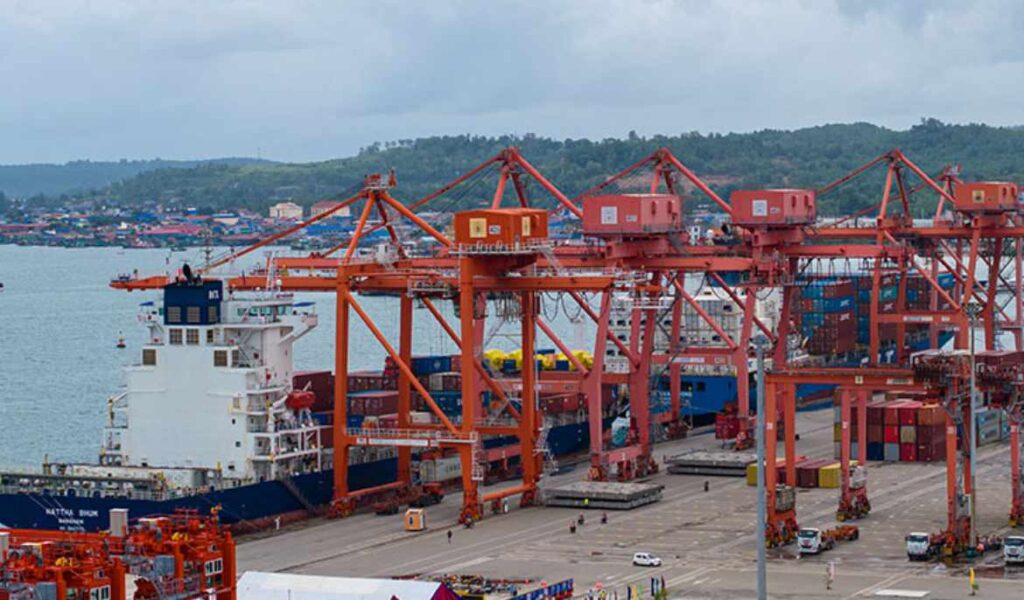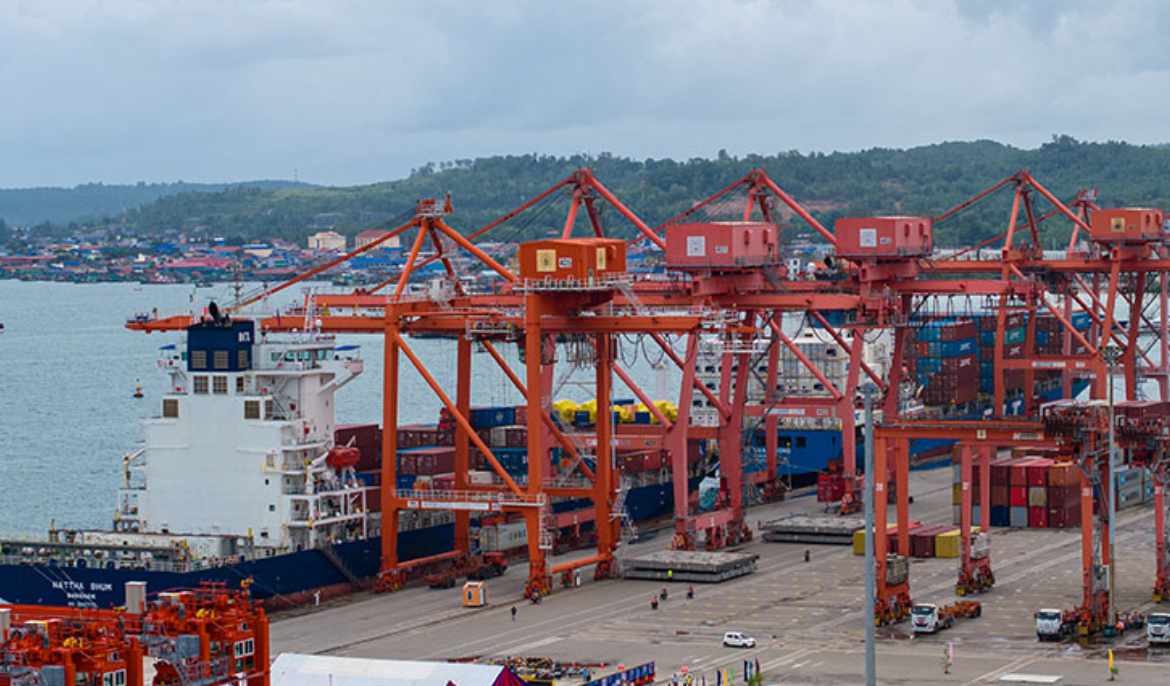Cambodia exported more than $9 billion worth of goods to the United States in the first nine months of 2025, reaffirming Washington’s position as the Kingdom’s largest export market, according to the latest data from the General Department of Customs and Excise (GDCE).
Bilateral trade between the two countries totalled $9.56 billion during the January-September period, representing a 22.6 percent increase compared to the same period last year.
Exports to the US reached $9.28 billion, up 22 percent year-on-year, while imports from the US totalled $283.63 million, a sharp 46.9 percent increase over 2024.
The GDCE report noted that the US remains Cambodia’s top export destination, followed by Vietnam, China, Japan and Canada.
The strong performance reflects Cambodia’s resilient manufacturing base, particularly in garments, footwear, travel goods and bicycles, which remain key exports under preferential trade schemes.
Imports from the US were driven by machinery, vehicles, agricultural products and technology, supporting Cambodia’s industrial and infrastructure development.
Trade experts added that the sustained trade growth highlights the deepening economic ties between the two nations, even as global markets face headwinds.
Government officials have also stepped up efforts to diversify exports, improve logistics, and ensure compliance with international standards to maintain the Kingdom’s competitive edge in the US market.
Cambodia’s export growth in 2025 has been driven by shifting market dynamics in the region, with the United States emerging as a key destination for Cambodian-made products, according to business leaders.
Lim Heng, Vice-President of the Cambodia Chamber of Commerce (CCC), told Khmer Times that the US has become one of Cambodia’s largest export markets, accounting for a significant share of total outbound shipments.
This surge in exports has drawn closer attention from Washington. In response to the widening trade imbalance, the US has imposed retaliatory tariffs on some Cambodian products in a bid to push for greater US exports to the Kingdom.
However, Heng said that Cambodia’s favourable investment laws, coupled with an expanding network of free trade agreements, have further strengthened the country’s position as an attractive production base for companies targeting the US market.
The combination of competitive labour costs, preferential access to certain markets, and a stable business environment has enabled exporters to scale up quickly to meet new orders.
Economists note that the realignment of regional supply chains, particularly in light of geopolitical tensions and production disruptions elsewhere, has created new opportunities for Cambodia to deepen its trade ties with the US. This trend is expected to continue in the short to medium term, provided the Kingdom maintains its investment-friendly environment and ensures reliable logistics for exporters.
Meanwhile, Cambodia’s recent success in reducing US tariffs from 36 percent to 19 percent is being viewed as a critical milestone in reshaping the Kingdom’s economic future and strengthening trade relations with the United States.
Awen Delaval, Founder of Lotus Silk Farm, a social enterprise that has operated in Cambodia for 22 years, told Khmer Times that this diplomatic breakthrough represents “a significant first step toward a more profound economic transformation,” and opens the way for strategic American engagement in Cambodia’s next stage of development.
The tariff reduction, achieved through negotiations led by Deputy Prime Minister Sun Chanthol, brings Cambodia’s rate in line with Thailand and the Philippines. It aims to protect the livelihoods of nearly one million garment workers who support four to five family members each, while creating space for a broader economic transition.
Delaval said the structural challenges facing Cambodia, including the return of hundreds of thousands of workers from Thailand and the dependency of the textile sector, should not be seen as obstacles but as catalysts for change. He noted that this moment presents an unprecedented opportunity to reshape the nation’s economic future through conscious production and sustainable development.
He added that the tariff cut provides the breathing room needed to move beyond basic garment manufacturing towards higher-value sectors that align with American market expectations for traceability, authenticity and environmental responsibility.
Delaval proposed a new trade approach centred on stronger Cambodia-US collaboration through the creation of a Cambodia-USA Center of Excellence for Conscious Luxury. The initiative would train returning migrant workers to become highly skilled artisans earning several times more than traditional manufacturing wages.
He said the centre would establish full traceability from raw materials to finished products to assure American consumers of authentic Cambodian origin, while encouraging American investment in sustainable industries that can deliver both economic and strategic benefits.
Delaval added that this approach would use economic development as a stabilising force, supporting regional security and reducing future migration pressures.
He also suggested that Cambodia and the US develop a comprehensive trade partnership framework focused on transparent production, differentiated tariff structures for authentic and sustainable goods, and strategic investment in training and technology transfer to build long-term economic ties.
He explained that Cambodia offers the US a transparent and sustainable alternative sourcing base to China, access to unique, environmentally friendly goods, and a strategic foothold in Southeast Asia through economic engagement.
For Cambodia, the benefits include dignified employment for hundreds of thousands of workers, economic diversification beyond garments, and international recognition as a leader in sustainable production.
“The current tariff adjustment, while positive, addresses symptoms rather than root causes,” Delaval said, adding, “Cambodia’s true path to prosperity lies in leveraging its authentic competitive advantages and forming strategic partnerships with allies like the United States.”



